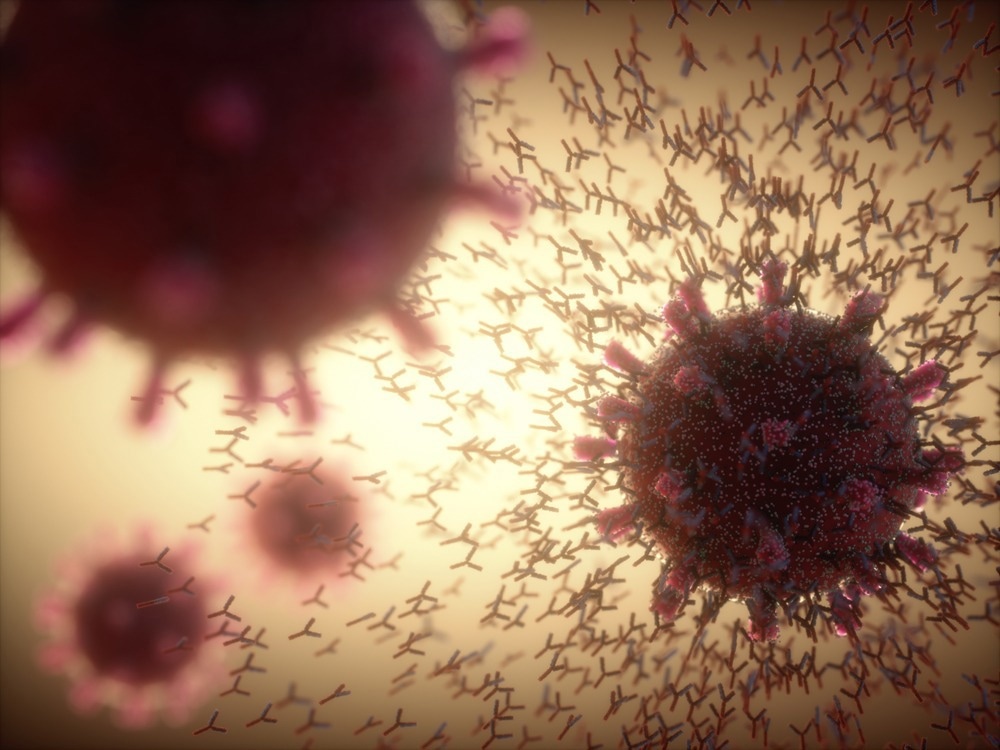In a recent study published in Emerging Infectious Diseases, researchers described the factors associated with protection, protection thresholds, and immunobridging in coronavirus disease 2019 (COVID-19) patients.
 Study: Correlates of Protection, Thresholds of Protection, and Immunobridging among Persons with SARS-CoV-2 Infection. Image Credit: ktsdesign/Shutterstock
Study: Correlates of Protection, Thresholds of Protection, and Immunobridging among Persons with SARS-CoV-2 Infection. Image Credit: ktsdesign/Shutterstock
Background
Forecasting the future efficacy of vaccines to determine the link between protection and immune response against symptomatic severe acute respiratory syndrome coronavirus 2 (SARS-CoV-2). This correlation could facilitate immunobridging, which can aid in approving new or revised vaccinations according to immunogenicity data without requiring extensive phase 3 studies.
Immunobridging is utilized for licensing seasonal influenza vaccinations in the US and the European Union, and it minimizes the time and cost needed to manufacture vaccines. Furthermore, identifying the immunity levels necessary for protection against emerging SARS-CoV-2 variants will be valuable for forecasting population-level infection immunity, directing public health vaccination, and boosting policies.
Comparing the studies on protection thresholds
There are six published estimates of the geometric mean titer (GMT) for messenger ribonucleic acid (mRNA)-1273 vaccination recipients, ranging between 247 IU/mL and 1,404 IU/mL. Similarly, estimations of the GMT for ChAdOx1 vaccination recipients ranged between 23 and 144 IU/mL. It is evident from the inconsistencies noted in the studies that the titer expression in international units was insufficient for standardizing between different tests and comparing the protection thresholds reported in these investigations, most likely due to variances in the assays themselves.
An alternate method for standardizing neutralization titers across studies was to presume that similar cohorts of vaccinated individuals should have comparable titers. This normalizing method allowed the comparison of the protection curves across several immunological correlate investigations. The team matched the data based on the assumption that the mean titer for ChAdOx1- or mRNA-1273-vaccinated individuals was the same between phase 1/2 and phase 3 trials for each vaccination.
Using the mRNA-1273 breakthrough-infection model as an example, the team observed that immunization with mRNA-1273 resulted in increased neutralization levels but a poor agreement was noted at low neutralization levels. Also, the ChAdOx1 protection curve exhibited strong consistency with earlier investigations in the region of the breakthrough-infection study for which neutralization data was available.
Despite fundamentally diverse data, assays, and methodologies employed to estimate protection curves in each investigation, the findings from the breakthrough infection studies demonstrated considerable consensus with the vaccine-comparison model.
In addition, following alignment to each vaccination group GMT, the underlying distribution of neutralizing antibody titers could be employed in conjunction with the protection curves associated with each trial to forecast the total vaccine effectiveness of current vaccines. This strategy indicated good agreement among all models and observed data.
Using the protection curve
Predicting vaccine efficacy with immunobridging
Regulators have emphasized the need for immunobridging research, which compared the immunogenicity of novel vaccines to that of older vaccinations. In other words, vaccine makers must note an appropriate current vaccine for comparison and evaluate the superiority or noninferiority margins in a randomized controlled experiment.
Employing the vaccine-comparison model built from prior research, the team could assess the superiority or noninferiority margins of current vaccinations that would result in over 80% effectiveness against ancestral SARS-CoV-2. If BNR162b2 or mRNA-1273 were employed as comparator vaccines, a noninferiority margin of approximately 0.44-fold for mRNA-1273 GMT or 0.54-fold for mRNA-1273 GMT would result in high confidence that the proposed vaccine had over 80% effectiveness.
Using ChAdOx1 as a comparison, the team determined that a 2.6-fold superiority margin of GMT against ChAdOx1 vaccines would offer comparably high confidence of over 80% vaccine effectiveness. Notably, these margins are in great accord with the lower 95% confidence intervals anticipated by the research on breakthrough infections. The consensus of these three research strongly supported the use of superiority or noninferiority margins in future trials of immunobridging.
Determining individual protective thresholds
A second objective of the investigation of protective thresholds was to establish a protective titer for therapeutic application, such as a blood test for a clinically meaningful antibody level that indicated whether a person had a higher chance of being well protected from COVID-19. It was evident from the protection curves that there existed a gradient of risk across various neutralizing titers.
In addition, the inter-run variability of tests is often notable enough for the determination of uncertainty within the neutralization titer for a specific blood sample which could result in wide confidence ranges for the anticipated protection for an individual. The high confidence intervals when calculating individual neutralization titers, along with the lack of consistency between different serologic tests, were key obstacles to effectively assessing and predicting neutralizing antibody titers among individual patients.
Conclusion
The study findings showed that the various COVID-19 factors assessed in protection studies had considerable agreement. However, additional immune responses may play a significant role in protecting against developing SARS-CoV-2 infection from symptomatic to severe. The consistency across various investigations of the association of neutralizing antibodies and effectiveness against COVID-19 could be significant for planning future vaccine usage, assessing population immunity, and decreasing the worldwide consequences of the COVID-19 pandemic.